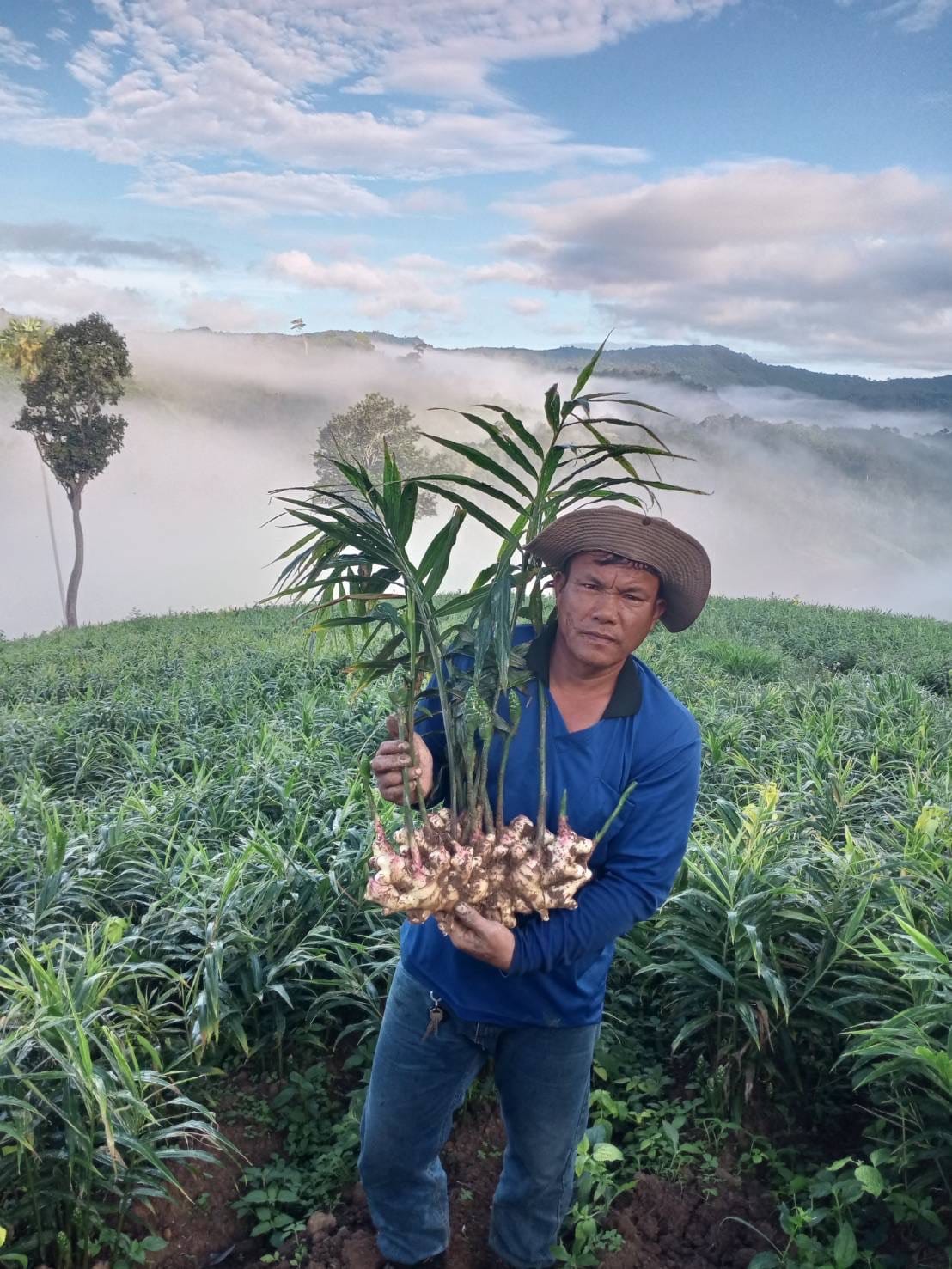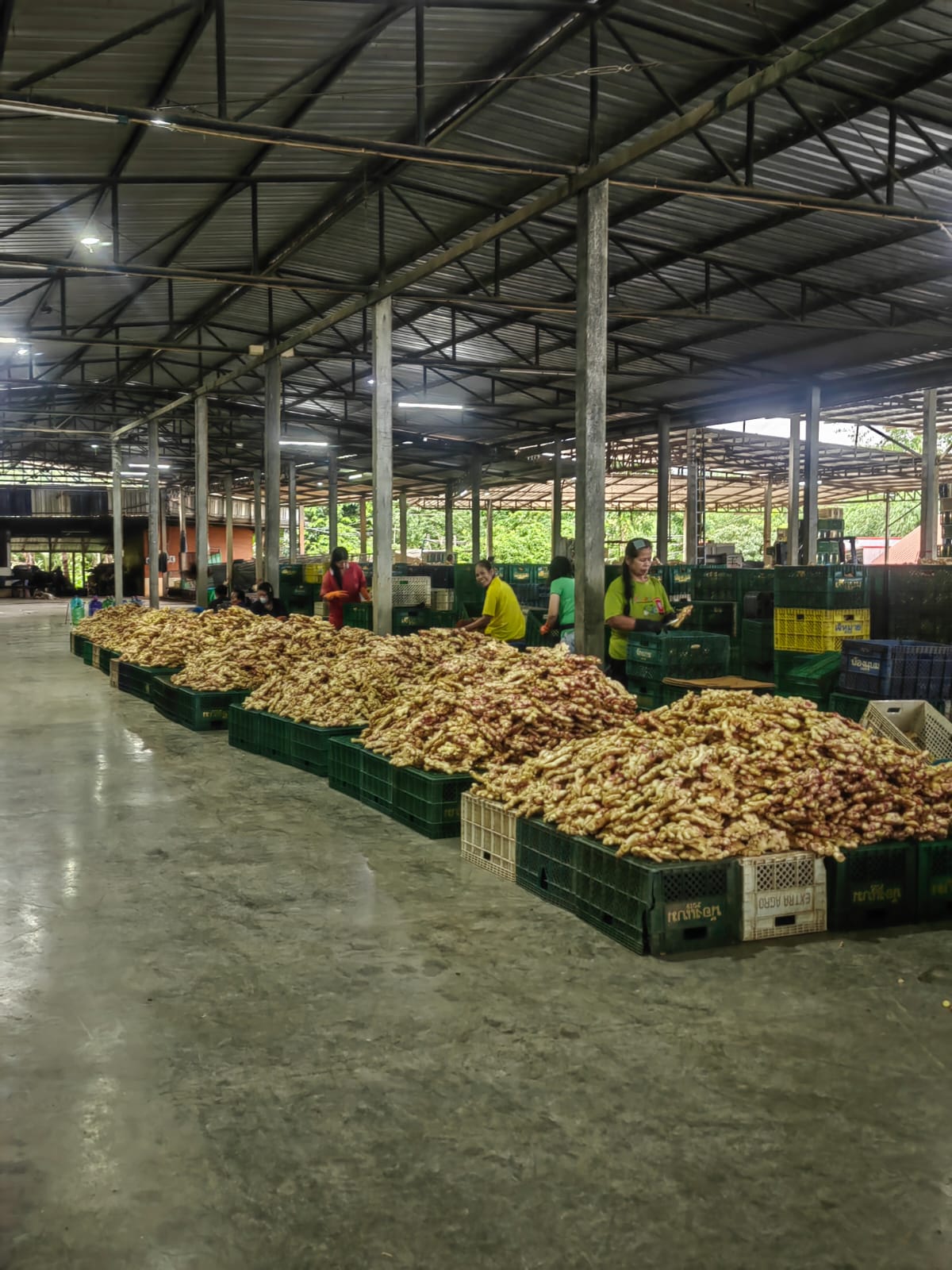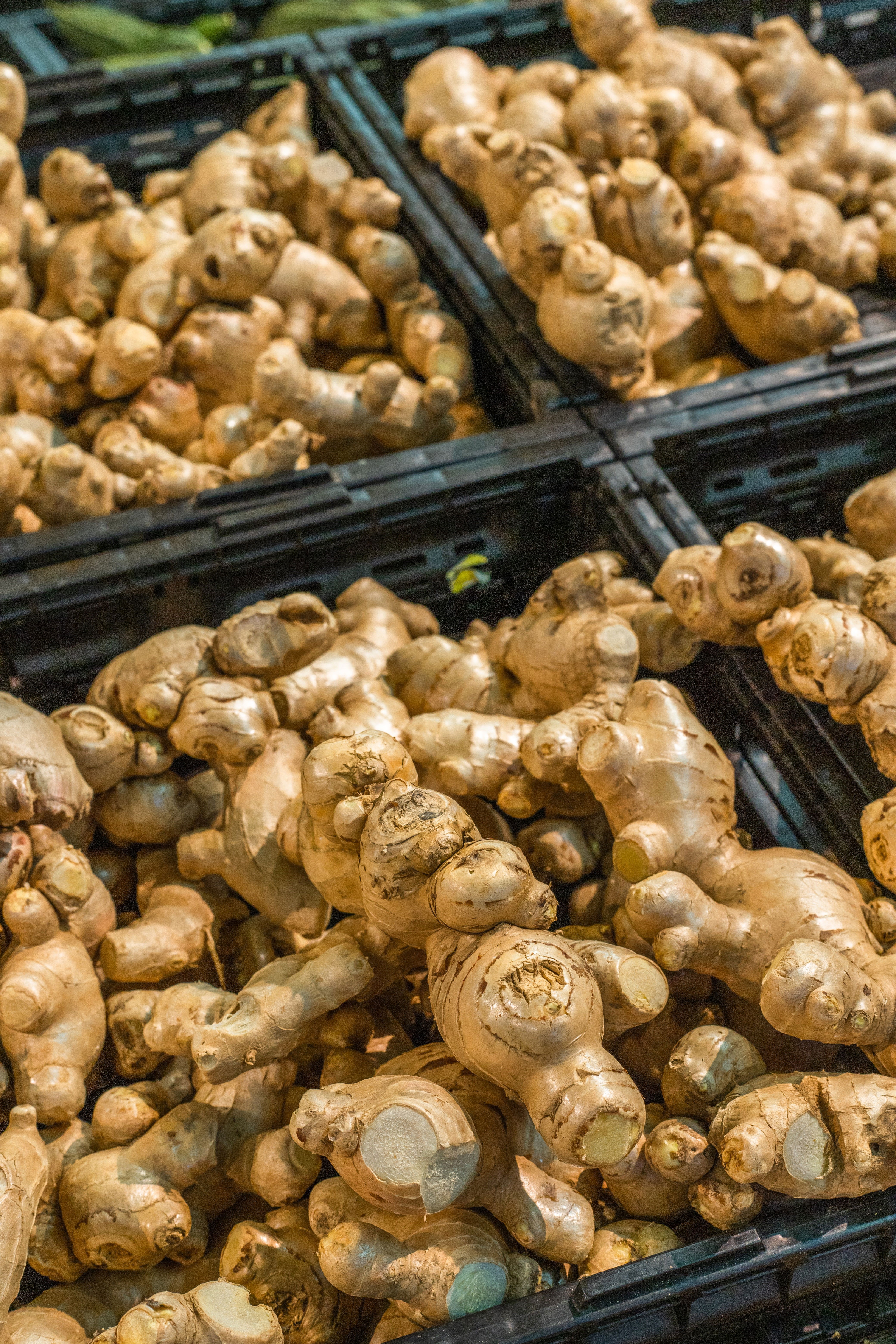FRESH GINGER FOR THE WORLD
1. Introduction to the global significance of fresh ginger
Ginger, with its distinct aroma and pungent flavor, holds a special place in the hearts and kitchens of people worldwide. Beyond being a popular spice, fresh ginger has gained significant recognition for its numerous health benefits and culinary versatility. In this article, we delve into the global significance of fresh ginger, exploring its rich historical and cultural heritage, as well as its role as a staple ingredient in various cuisines. We will also uncover the medicinal properties of ginger, shedding light on its potential to improve digestion, boost immunity, and alleviate inflammation. Furthermore, we will examine the cultivation and production processes behind fresh ginger, the ever-growing global market demand, and the challenges and opportunities within the industry. Join us on this journey as we discover the true potential of fresh ginger for the world.

1. Introduction to the global significance of fresh ginger
The historical and cultural significance of ginger
Ginger has a rich history that stretches back thousands of years, with its origins believed to be in Southeast Asia. It quickly gained popularity and spread to different parts of the world, becoming an essential ingredient in various cuisines and traditional remedies. Ginger has been highly regarded for its distinct flavor and medicinal properties, making it an indispensable part of many cultures.
Ginger as a staple ingredient in various cuisines
From Asia to Africa and the Caribbean, ginger is a beloved ingredient in a wide range of cuisines. Its unique flavor profile, which blends heat, sweetness, and earthiness, adds depth and complexity to dishes. Ginger can be found in curries, stir-fries, soups, desserts, and even beverages like teas and cocktails. Its versatility and ability to enhance the taste of both savory and sweet dishes make it a beloved staple in kitchens around the world.
Exploring the medicinal properties of ginger
Ginger is not just a flavorful addition to meals; it also offers a host of potential health benefits. For centuries, ginger has been used in traditional medicine to treat ailments such as nausea, digestive issues, and inflammation. Studies have shown that ginger contains compounds with antioxidant and anti-inflammatory properties, making it a potential natural remedy for a range of health conditions. Its therapeutic potential has garnered considerable attention in the medical community.

2. Health benefits and nutritional value of fresh ginger
Antioxidant properties and immune-boosting effects
Fresh ginger is packed with antioxidants that help combat oxidative stress in the body. These antioxidants can help strengthen the immune system, protecting against common illnesses and infections. Incorporating ginger into your diet may give your immune system an extra boost, helping you stay healthier year-round.
Ginger as a natural remedy for digestive issues
One of ginger's well-known benefits is its ability to alleviate digestive discomfort. Whether it's a case of indigestion, bloating, or nausea, ginger has been traditionally used to provide relief. It can help stimulate digestion, reduce inflammation in the gut, and ease symptoms of gastrointestinal distress. So, the next time you're feeling uneasy after a heavy meal, reach for some fresh ginger to settle your tummy.
Managing inflammation and reducing pain with ginger
Ginger's anti-inflammatory properties make it a potential ally in managing pain and reducing inflammation. Studies have shown that ginger may help alleviate symptoms of conditions such as osteoarthritis and muscle soreness. Its natural compounds work to inhibit inflammation and may act as a natural pain reliever, providing a gentler alternative to over-the-counter medications.

3. The cultivation and production of fresh ginger
Optimal climatic conditions and regions for ginger cultivation
Ginger thrives in tropical and subtropical climates, preferring warm temperatures and high humidity. Regions such as India, China, Nigeria, and Thailand are known for their abundant ginger production due to their suitable climatic conditions. Adequate rainfall, well-drained soil, and plenty of sunlight are key factors in cultivating high-quality ginger.
Understanding the ginger planting process
Ginger cultivation starts with the planting of ginger rhizomes, which are the underground stems from which ginger plants grow. These rhizomes are planted in prepared soil, and with proper care, they sprout shoots and develop into full-grown plants. Ginger requires consistent watering, protection from pests, and nutrient-rich soil to ensure healthy growth.
Harvesting and post-harvest techniques for fresh ginger
Once ginger plants have matured, the rhizomes are carefully excavated from the soil. After harvesting, the rhizomes go through a post-harvest process that typically involves cleaning, drying, and sometimes peeling. The dried ginger is then sorted, packed, and prepared for distribution, ensuring that it reaches consumers in its freshest and most flavorful form.

4. Global market demand for fresh ginger
The increasing popularity of fresh ginger in international markets
Fresh ginger has experienced a surge in demand worldwide, thanks to its growing reputation as a versatile and healthy ingredient. Consumers are increasingly seeking natural remedies and flavorful additions to their meals, and ginger fits the bill perfectly. Its popularity has transcended borders, making it a sought-after product in both traditional markets and modern grocery stores.
Key drivers and factors influencing the demand for fresh ginger
Several factors contribute to the rising demand for fresh ginger. First and foremost, awareness of ginger's health benefits continues to grow, prompting more people to incorporate it into their diets. Additionally, the global popularity of Asian cuisine has played a significant role in driving up demand for ginger. With the increasing interest in diverse flavors and culinary experiences, fresh ginger has become a must-have ingredient for cooking enthusiasts worldwide.
Market trends and potential growth opportunities
The market for fresh ginger shows no signs of slowing down, with the potential for further growth in various segments. As health-conscious consumers embrace natural remedies and seek out functional foods, ginger fits perfectly into this trend. Furthermore, the rising interest in plant-based diets and the demand for unique flavors opens doors for ginger to branch out into new product categories. Whether it's ginger-infused beverages, snacks, or condiments, the market for fresh ginger continues to expand, offering exciting opportunities for both producers and consumers alike.

5. Challenges and opportunities in the fresh ginger industry
Addressing quality control and ensuring food safety
In the fast-paced world of fresh ginger production, ensuring quality control and food safety can be a real challenge. From proper harvesting techniques to post-harvest handling, every step of the process requires careful attention. The industry must prioritize implementing robust quality control measures and adhering to strict food safety standards to maintain consumer trust and avoid any potential health risks.
Transportation and storage challenges in the ginger supply chain
Transportation and storage play a crucial role in the ginger supply chain. Ginger is a delicate root that requires careful handling to preserve its freshness and flavor. However, long-distance transportation and inadequate storage facilities can pose significant challenges. The industry must invest in efficient and temperature-controlled logistics to ensure that the ginger arrives at its destination in optimum condition, minimizing spoilage and maximizing shelf life.
Exploring emerging markets and diversifying ginger products
While ginger has been a staple in many cuisines for centuries, there is still untapped potential in emerging markets. As consumers' taste preferences evolve and international trade expands, the fresh ginger industry has the opportunity to explore new markets and diversify its product offerings. From ginger-based condiments to ready-to-drink ginger beverages, there is room for innovation and creativity to capture the interest of a broader consumer base.

6. Sustainable farming practices and environmental impact of ginger production
Organic and eco-friendly ginger farming methods
In an era of increasing environmental awareness, adopting sustainable farming practices is crucial for the ginger industry. Organic farming methods, such as using natural pest control and avoiding synthetic fertilizers, can reduce the environmental impact of ginger production and promote healthier soil and ecosystems. By prioritizing eco-friendly approaches, the industry can meet consumer demands for more sustainable and ethically produced ginger.
Water management and conservation in ginger cultivation
Water scarcity is a global concern, and the ginger industry must address its water usage to minimize waste and maximize efficiency. Implementing advanced irrigation systems and promoting water conservation practices can help reduce the amount of water needed for ginger cultivation. By managing water resources responsibly, the industry can contribute to sustainable agriculture and ensure the long-term viability of ginger production.
Reducing carbon footprint and promoting biodiversity
Ginger production has an undeniable impact on the environment, and the industry must take steps to reduce its carbon footprint. From optimizing energy usage in processing facilities to promoting reforestation initiatives, every effort counts. Additionally, fostering biodiversity by preserving natural ecosystems and habitats can contribute to a more balanced and resilient agricultural system. By acknowledging the importance of environmental stewardship, the ginger industry can contribute to a greener future.

7. Innovative uses and culinary applications of fresh ginger
Ginger in beverages: From teas to cocktails
Fresh ginger's versatility extends beyond the kitchen – it can also be a star ingredient in various beverages. From soothing ginger teas that provide comfort on rainy days to refreshing ginger-infused cocktails that add a zing to social gatherings, there is no shortage of creative possibilities. Ginger's unique flavor profile and potential health benefits make it a favorite in the mixology world and a go-to ingredient for those seeking exciting drink experiences.
Ginger-infused desserts and baked goods
Who said ginger is only for savory dishes? Ginger can lend its distinct taste and subtle heat to an array of desserts and baked goods. From gingerbread cookies that fill the air with warm spices during the holiday season to ginger-infused ice creams that provide a refreshing treat on hot summer days, this versatile root adds a delightful twist to traditional sweets.
Exploring savory dishes and spice blends with ginger
In savory dishes, ginger is like a secret weapon that elevates flavors and adds depth to various cuisines. From stir-fries to curries, ginger's aromatic and slightly pungent notes can transform a dish from ordinary to extraordinary. Along with its culinary prowess, ginger also shines in spice blends, contributing its unique character to popular concoctions like garam masala or Chinese five-spice powder. The possibilities are endless when it comes to incorporating ginger into savory delights.

8. Future trends and the potential of fresh ginger in the global market
Rising consumer demand for natural and healthy ingredients
As consumers become more health-conscious and seek out natural, wholesome ingredients, fresh ginger is poised to take center stage. With its long-standing reputation as a natural remedy for digestive issues and its potential anti-inflammatory properties, ginger aligns perfectly with the growing demand for healthier food options. The fresh ginger industry has a golden opportunity to cater to this trend and position itself as a key player in the global market.
Exploring new ginger-based products and value-added offerings
Innovation is the key to staying relevant in a competitive market, and the fresh ginger industry is no exception. By exploring new ginger-based products and value-added offerings, such as ginger extracts, powders, or even ginger-infused oils, the industry can tap into niche markets and expand its reach. With a touch of creativity and a dash of market research, the possibilities for ginger-related products are limitless.
The role of technology and innovation in the ginger industry
Technology and innovation have the power to revolutionize the ginger industry. From advanced farming techniques that increase productivity to state-of-the-art processing methods that maintain ginger's quality, embracing technology can enhance efficiency and reduce waste. Additionally, innovations in packaging and storage solutions can extend the shelf life of fresh ginger and open up new opportunities for exportation. By harnessing technology, the ginger industry can pave the way for a bright and prosperous future. IN conclusion, fresh ginger stands as a remarkable ingredient that has captivated palates and hearts worldwide. Its distinct flavor, health benefits, and culinary versatility have made it an essential component of various cuisines and medicinal practices. As the global market demand for fresh ginger continues to rise, it presents both challenges and opportunities for farmers, producers, and innovators. By embracing sustainable farming practices, exploring new culinary applications, and staying attuned to emerging market trends, the potential of fresh ginger in the global market is truly boundless. So, let us celebrate the wonders of fresh ginger and embrace its incredible journey from field to plate, as we continue to savor its flavor and reap its benefits for years to come.

FAQ
1. Is there a difference between fresh ginger and ground ginger?
Fresh ginger and ground ginger, while derived from the same plant, have notable differences. Fresh ginger refers to the whole root of the ginger plant, which has a fibrous texture and a strong, zesty flavor. On the other hand, ground ginger is made from dried and powdered ginger root, resulting in a more concentrated and milder flavor. Depending on the recipe and personal preference, fresh ginger and ground ginger can be used interchangeably, but their flavors and textures may vary.
2. How should I store fresh ginger?
To prolong the freshness and flavor of fresh ginger, it is best stored in the refrigerator. Place the ginger root in a resealable plastic bag or wrap it in a slightly damp paper towel to keep it from drying out. Properly stored, fresh ginger can last for up to three weeks in the refrigerator. Alternatively, you can also freeze fresh ginger for longer-term storage. Simply peel and grate the ginger, then store it in an airtight container or freezer bag in the freezer for up to six months.
3. Can ginger help with digestive issues?
Yes, ginger has long been used as a natural remedy for various digestive issues. It contains compounds that can help stimulate digestion, reduce nausea, and alleviate stomach discomfort. Ginger has shown promising effects in relieving symptoms of indigestion, bloating, and morning sickness. It is often consumed as ginger tea, added to meals, or taken in supplement form to support digestive health. However, if you have chronic digestive conditions or are on medication, it is advisable to consult with a healthcare professional before using ginger as a remedy.
